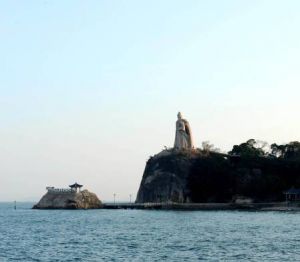Gulangyu Island
Standing opposite to Xiamen City across the sea, Gulangyu Island (鼓浪屿岛) is a historic international settlement and one of the top ten excellent tourist destinations of Fujian Province. On July 8, 2017, the island was included on the UNESCO World Heritage list for its varied architecture and multicultural history. According to UNESCO, the inscription serves as a "magnet for international cooperation" and financial assistance for heritage conservation projects.
The island covers an area of 1.78 sq km and is home to 20,000 residents.Reputed as a "garden on the sea," "architecture exhibition of ten thousand nations," "hometown of music" and "island of piano," it features 13 consulates, churches, hospitals, schools, and police stations, built by foreign communities from the middle to late 19th century.
In the early 20th century, the island attracted overseas Chinese elites, who returned and built private residences on the island, often with a mixture of eastern and western architectural styles.
Gulangyu has more than 2,000 intact historical buildings, making it one of the best-preserved international settlements in China. Its main scenic spots include the Crag of Sunlight, Garden of Beans (Shuzhuang Huayuan), Bright Moon Garden (Haoyueyuan) and Yuyuan Garden. The tourist destination receives more than 10 million visitors per year.
Island of Music
Gulangyu has one of the highest pianos ownership ratios in China, with nearly 600 pianos on an island that is less than two square kilometers.
Many of China's most celebrated musicians have come from Gulangyu, and the island is nicknamed "piano island." Gulangyu has the first piano museum and only organ museum in China, both established by Hu Youyi, an Australian Chinese pianist and collector. The museums host important music festivals and contests regularly.
